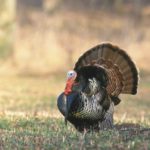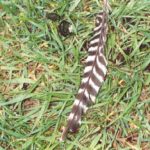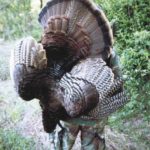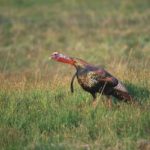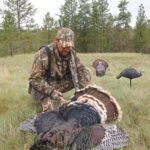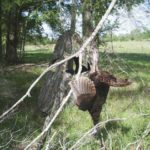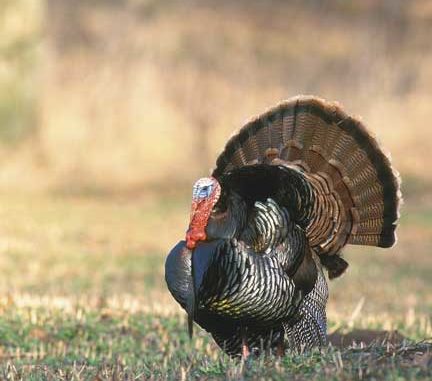
The state’s leading expert looks at the population as a whole, and gives his picks for this season’s hotspots.
A lady from St. Tammany Parish was quoted in an article within the past year that was rather telling. She said it used to be she was upset at the sound of chain saws in the woods around the parish. Today, she’s more upset at the sound of cement trucks pouring concrete to make parking lots and housing developments.Southeast Louisiana has indeed endured a change of face over the past few decades, and this metamorphosis of the region has taken place for at least two reasons.
One, urban sprawl from nearby New Orleans has sent residents spilling out into outlying areas to buy and build in the suburbs to escape the city.
Two, Hurricane Katrina not only devastated the landscape in areas surrounding New Orleans but displaced thousands of citizens, making the surrounding area attractive as home sites.
“This part of the state has undergone some significant changes, not only in the influx of people into what was until recently wooded areas but also in the destruction of wildlife habitat,” said Larry Savage, turkey study leader for the Louisiana Department of Wildlife and Fisheries.
We visited with Savage recently for his assessment of the wild turkey situation in the state today and his view of the upcoming spring turkey season in Louisiana.
Since being appointed to his current position, Savage has been firm about his conservative approach to the management of wild turkeys in the state, making recommendations regarding season dates, bag limits and hunting regulations that favor turkeys over turkey hunters.
“We’ve come too far over the years in finally getting turkeys established around the state to do otherwise,” he said. “If we make a mistake in our decision making, we want to err on the side of the turkey.”
Part of the management scheme for wild turkeys today involves getting input from hunters around the state to, in a sense, “feel their pulse” as to what they prefer when it comes to turkey hunting.
“We’ll still make our decisions in the turkey’s favor, but it helps us to know where our turkey hunters stand on things like dates for opening season, bag limits, etc.,” he noted. “We asked hunters in a survey how they felt about uniform season opening dates for the state. Seventy percent of those responding preferred a uniform opening date, which we like because it distributes hunters rather than having them concentrated in areas that open first. We feel that by having a uniform opening date as well as keeping season length and bag limits on the conservative side, more hunters will have more chances to hear a gobbler.
“Once we elected to open the season at the same time over the state, we had to decide when this opening date should be. Mississippi opens their season in the middle of March, while neighboring Arkansas opens theirs in April. We decided that somewhere in between would be best for Louisiana. Our uniform opening date for each of the areas of the state is March 21 for the spring 2008 season.”
The southeastern region is the area where turkey seasons first opened in the state. Ironically, this region is where turkeys are having the most trouble.
“Those folks in the Florida Parishes would still love to see an early opening date like they had in years past,” Savage said. “However, with the loss of habitat to urban sprawl and the effects of Katrina, the situation down there dictates that we take a very conservative approach to hunting in that region.
“Today, the areas with the most focus on turkeys has shifted from the Florida Parishes to places like Vernon and Beauregard in Southwest Louisiana and Union and Claiborne parishes in the north-central part of the state. We also had one of the better hatches this past year in the northeast portion of the state along the Mississippi delta.”
One of the most important and telling statistics that biologists consider in determining the overall health of the turkey population is the annual poult survey. Sightings are documented and reported by department staff from around the state as to the number of poults per hen sighted. These numbers are averaged to determine the approximate number of poults per hen documented for each parish.
“Actually, last spring we had no poor hatches but also no excellent hatches,” Savage said. “Overall, our surveys showed what we call ‘fair’ reproduction. However, turkeys are cyclic in reproduction, and we’re not really concerned when a couple of years are slightly down in numbers of poults per hens. Weather conditions and availability of mast varies from year to year, and with ideal weather and plenty of food available, the tendency is for the numbers to rebound.
“The average we’ve seen statewide is approximately two poults per hen. We think of this as a ‘maintenance’ hatch; they’re not expanding nor are they diminishing either.”
Over the years, wildlife professionals were busy about trapping and relocating turkeys around the state, taking some turkeys from areas with high populations and releasing them in areas with suitable habitat but low turkey numbers. Savage said that the emphasis has shifted from trapping and relocating to maintenance of the birds today.
“We’re getting involved in more research and studies to fine-tune our management today,” he said. “For example, we’re doing a research project on Sherburne regarding how turkey-hen nesting relates to raccoon movement in this area. Raccoons are serious predators of turkey nests, and we’re trying to find out the best way to meet this challenge.
“We’re putting radio transmitters on trapped nesting hens as well as raccoons. We’re looking at the behavior patterns of raccoons so that timber harvests can give the advantage to turkeys. When timber harvests create ‘checkerboard’ cuts connected by woods roads, we’re finding that raccoons can move from one patch of cover to the next, enabling them to more easily locate nesting turkeys. Therefore, we’ve recommended timber cuts in configurations that will help curtail this problem of nest predation.
“We’re also continuing with our banding project involving gobblers to determine the extent of hunting mortality of gobblers. We don’t want hunters to take more than 30 to 40 percent per year, and this study helps us determine this. When we started this project in Southeast Louisiana, we had a long season with a three-bird season limit. The first year, 70 percent of the banded gobblers were taken by hunters, which gave us plenty of concern. Now that we’ve shortened the season in that area and have adopted a statewide two-bird season limit, the percent of recovered banded gobblers has dropped to near 20 percent, which is a vast improvement.”
Wildlife officials continue to fine-tune and “tweak” hunting regulations based on the data they are able to compile.
“We were able to increase the season length in some areas because data indicated that the birds in those areas had reached the population level that they could stand the extra pressure,” Savage said.
As far as the upcoming season, Savage offered some suggestions regarding areas that should provide some of the best hunting for the spring 2008 season.
“Reproductive data indicates that the bottomland areas in Northeast Louisiana had a fairly good hatch last year, and that would include the Tensas National Wildlife Refuge and state areas such as Big Lake Wildlife Management Area. This part of the state should offer hunters a pretty good chance to hear some gobbling this spring,” said Savage.
“The Atchafalaya area has had a fairly good hatch for three years straight, and this area, particularly the Sherburne Wildlife Management Area as well as private lands where hunters have permission to hunt, should offer quality hunting this spring.
“Three public areas I expect to produce some good results this spring are Sicily Island, Union and Bayou Macon wildlife management areas. There should be a good age structure of birds represented there, and hunters should be able to hear some gobbling.”
When you look around the state, there are sure to be some areas that stand out more than others when it comes to having the best chance at waylaying a gobbler. Savage said that two public areas in west-central Louisiana fit the bill.
“I’d have to say that the Fort Polk and Peason Ridge wildlife management areas in western Louisiana offer the best chance at bagging a gobbler this coming year,” he said. “However, these areas come with some negatives that would keep most hunters away. Because of military operations in the region, operations that have intensified with the war in the Middle East, you never know when these areas will be off-limits to hunters.
“The military determines daily if hunters may have access for that day, so it is necessary to check for posted information daily hoping that on the day of a planned hunt the area will be open. There are lots of turkeys in here, and a hunter lucky enough to visit the area on a day when hunting is allowed can have a good chance to score on a gobbler.”
Savage noted that while the majority of Southeast Louisiana has seen a decline in turkey hunting because of the human population increase coupled with hurricane devastation, there is one area in that region that still offers some good hunting.
“The land around St. Francisville and Clinton has had a stable forest habitat and good population of turkeys for a good while, and those hunters having access to land in that area can expect good hunting,” he said. “This year, the Dewey Wills Wildlife Management Area in central Louisiana is offering a very limited weekend hunt for five hunters on the lottery basis. If you’re lucky enough to be drawn for this hunt, you have a good chance at a gobbler because there will be virtually no hunting pressure to deal with.”
Savage mentioned other regions of the state where hunters should check for turkeys. These include the Red River and Three Rivers areas of east-central Louisiana as well as the Jackson-Bienville Wildlife Management Area in the north-central part of the state.
“Actually, every part of the state with turkey habitat, with the exception of extreme Southeast Louisiana, should provide turkey hunters with opportunities to fill their tags this season,” Savage added.
The 2008 spring turkey season will not require the use of tags, which will become mandatory for the 2009 season. However, wildlife personnel are encouraging hunters to use the tags they receive when licenses are purchased for 2008. This will not only give hunters the chance to practice tagging a year before it becomes mandatory; data gathered from hunters using tags will help in the continued management of these majestic birds.
For detailed information regarding regulations, boundaries of hunting areas, dates and application process for lottery hunts and other vital information, refer to the current turkey hunting regulations pamphlet published by the Louisiana Department of Wildlife and Fisheries, or go on-line to the department’s website at www.wlf.louisiana.gov/hunting/seasons/turkey.
